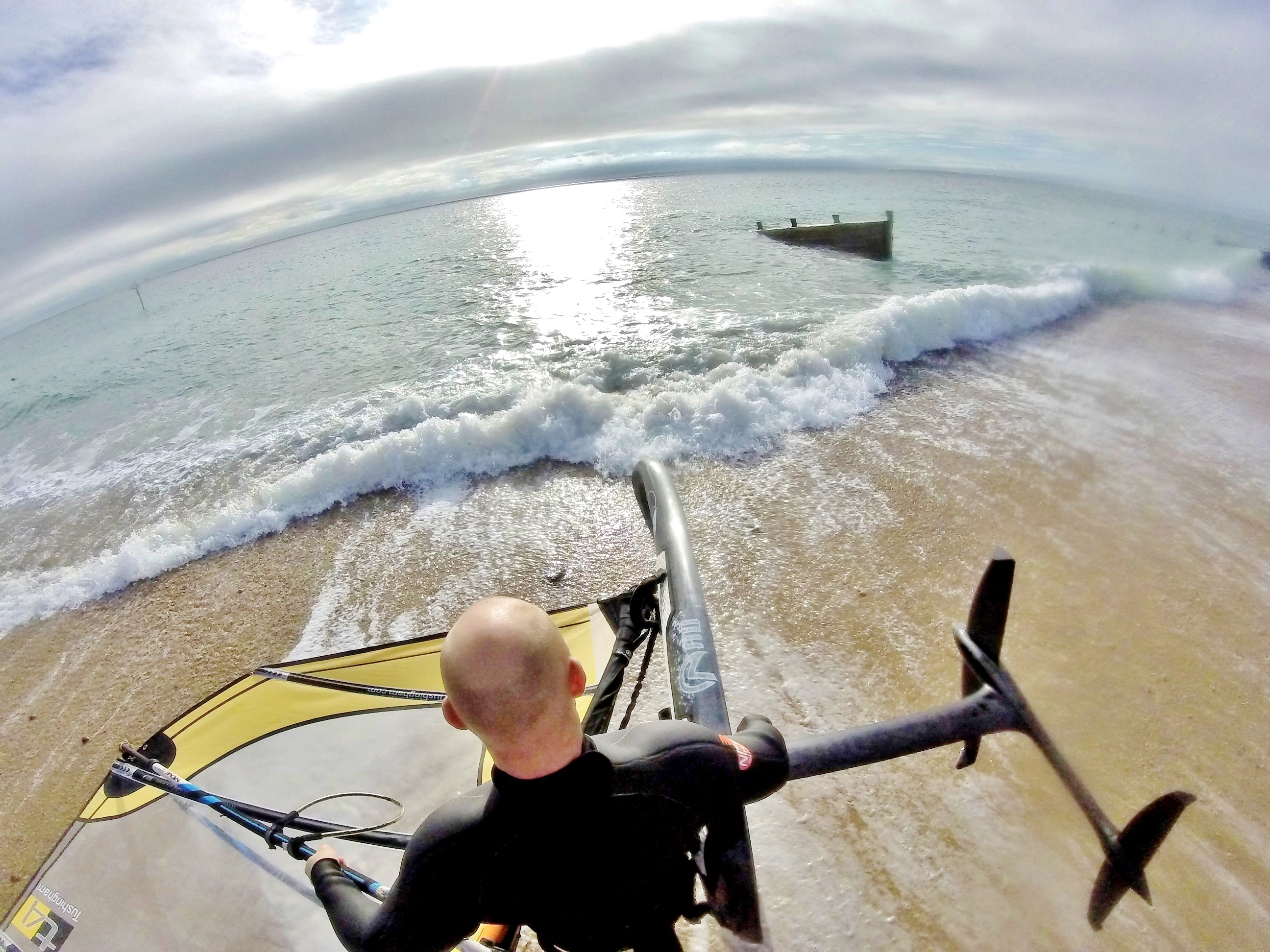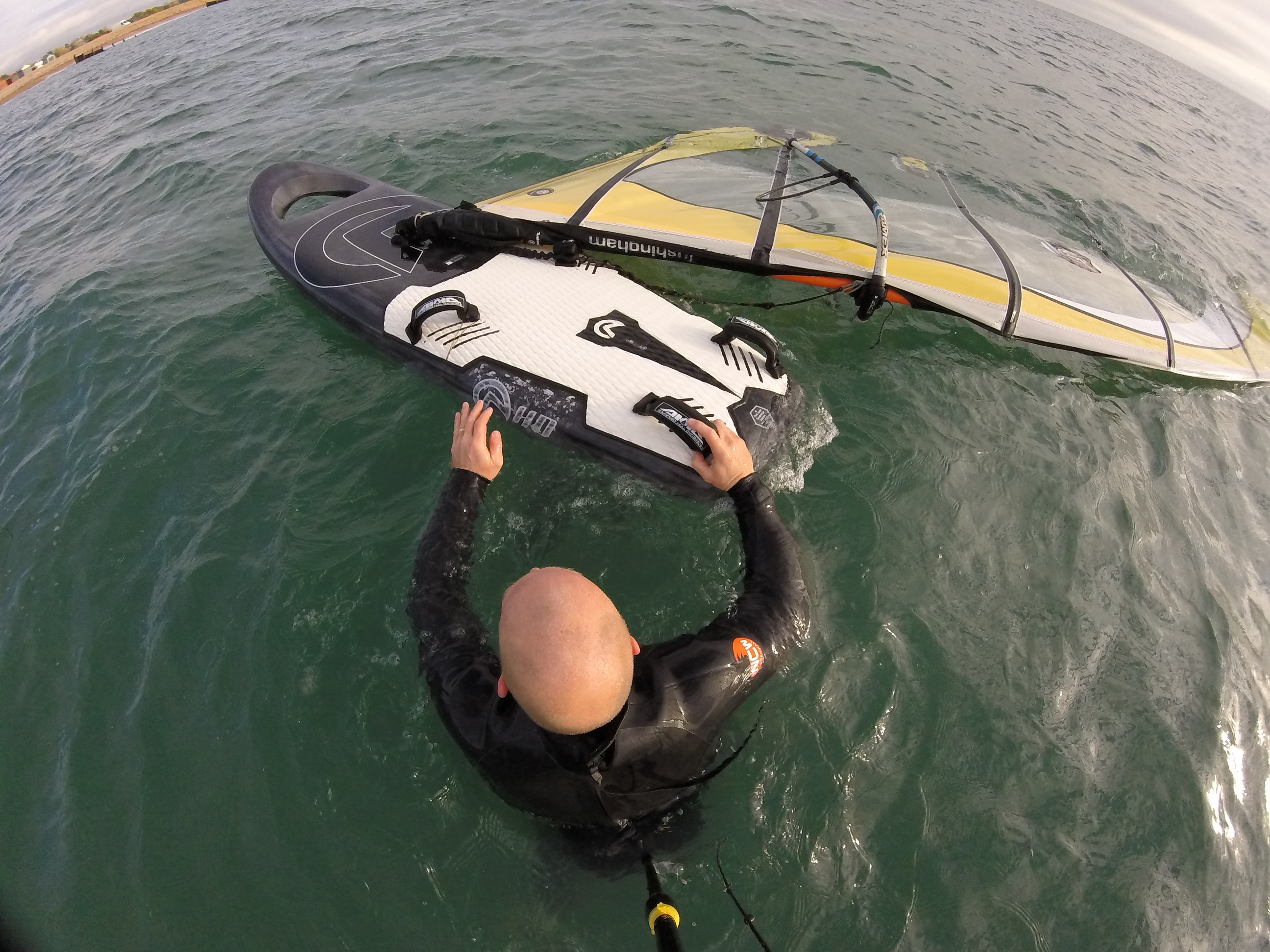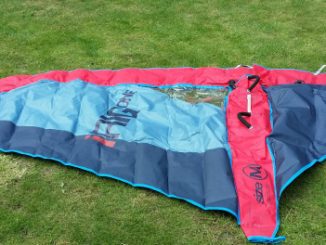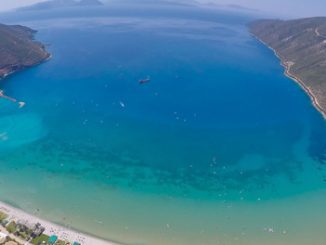
Words and pics: Windsurfing UK
Foils are everywhere at the moment. It seems you can’t check your favourite social media stream without being bombarded by the likes of Kai Lenny on his SUP foil or kitesurfers getting serious light air hang time on theirs. Windsurfing foil posts are also dotted about. 2016’s PWA Sylt and La Torche events both featured significant foiling action in the absence of proper wind during certain days – the PWA are looking to introduce foiling to their slalom format. And then of course there’s Olympic debate and whether the RS:X class will become foiling orientated (which makes sense with many venues being predominantly light air spots).
The reason to foil is marginal breeze focused. Those of us who get out in all wind strengths will know how ‘sticky’ windsurfing kit can be when gust meters read marginal measurements. So from a recreational sailor’s point of view something even more efficient and attention grabbing is going to make waves – literally.
Windsurf foiling is definitely the lesser of all known foil disciplines. Perceived difficulty and expense being obvious barriers. With this in mind we decided to hit up one of the brands who’ve been into windsurf foiling from almost the beginning. While AHD windsurfing products may have slipped off the radar somewhat, the French company is still thriving and innovating. For around 10 years AHD and pro rider Bruno Andre have been developing their foiling equipment – the only brand to manufacture a dedicated foil windsurf board.
The kit
AHD’s AFS-1 foil board and foil are aimed squarely at the lower end of the wind spectrum. With its large surface area this is obvious when you look at the foil’s wing size. At 110L, however, we were sceptical about the board – not least because of the large cut out in the nose. The dimensions of the AFS-1 aren’t as large as we’d have expected. Instead, on paper, the AFS1 is edging towards the sizing of our full power freestyle sled. But in the flesh they couldn’t be more different and the foil adds a further 10lt.
Details are pretty hard to come by so we quizzed UK importer Jon Popkiss (Kai Sports Ltd) at length about where to start with foiling. He gave us some worthy advice and sign posted a few different vids that would possibly help. But back to the kit for a mo…
Coming in deconstructed fashion AHD’s AFS-1 carbon foil is easy to assemble. Simply slot the wings into place and screw tight – it couldn’t be simpler as zero tools are required. It’s the same when attaching to the AFS-1 board. AHD have developed their own super strong fin box fitting, which is positioned further forwards than usual windy types. The fit is snug and tight – for such a big piece of carbon everything couples together very easily and in solid fashion. Once in place you suddenly realise how far off the ground the tail now sits which presents one of the first fundamental obstacles: carrying.
Transport
Foils are cumbersome pieces of gear to move around – especially when coupled up. There’s simply no way of avoiding this. Once in position the whole package becomes quite awkward to manoeuvre around the beach, at home and store. When not in use it’s definitely wise to deconstruct the AHD foil so it doesn’t get in the way and pick up dings. You’ll then need a safe place for foil’s upright, wings and board to reside.
Back at your chosen launch and riders will have the task of preparing to go afloat. You can either place the AFS-1 next to the water and retrieve your sail separately or attach your rig and carry with board upside down holding onto the foil’s upright. It’s also possible to walk with AHD’s foil gear in conventional fashion – i.e. holding onto the boom with one hand and footstrap with another. This is quite a tiring method, however, as sailors will need to keep the foil high and avoid snagging the ground. Other ways of lugging are available also.
Once at the water’s edge it’s time to go afloat. Be aware, however, that you’ll need some water depth to launch. Otherwise the foil will have no clearance and will dig into the seabed – not great for the foil or rider balance.
Sail choice
Choosing the correct sail flummoxed us for a while. Our first AHD foiling session took place in roughly 18-20 knots of gusty wind. With standard windsurfing scenarios this is at the lighter end of the breeze spectrum. AHD’s website describes the AFS1 foil system to be perfect for light airs, which we considered this to be – apparently it’s possible to get going in 4 knots with a 7.5m ish sail! So for this first go a 5.2m was utilised.
As mentioned the surface area of the AFS-1 foil is large. With each gust the foil lifted aggressively and with no prior experience we were in the drink in seconds. When you’re overpowered the board drops nose first and pitches to a 45 degree angle. With it being February, cold and a biting side offshore wind puffing it didn’t take long before we canned the exercise and reverted to usual windy gear.
The next time out wasn’t for a while. Having genned up a little more we decided to take things a tad slower. Time and again the word ‘finesse’ was used, so it was finesse we’d employ. We again chose a 5.2m but launched in wind strengths hovering just below 10 knots. And low and behold…nothing! Nada. We limped across the water barely registering any kind of speed; not even close to foiling. Back to the drawing board again then.
Re-rigging we opted for a 6m sail. This time results were encouraging – although we still didn’t really foil. Wind speeds had increased slightly and while forward motion was more efficient it was still proving tricky. We tried to copy what was depicted in the tutorials we’d seen. Slotting into the front footstrap we pumped hard, only to have the board lurch violently from side to side but without lift.
Canning the session again we waited for a windier day. Upon arrival the breeze was picking up and we rigged a 7.5m cautiously. Gusts were averaging 14 knots or so and we were determined to crack this foiling lark. First run and all seemed similar to what we’d experienced so far – not much foiling. And then a stronger gust hit and everything changed.
Half foiling
With a few more knots filling our sail we were able to get both feet comfortably into the AFS-1’s footstraps. Hooked in, albeit with a slightly more upright stance than standard windsurfing, we huffed along at a brisk rate. There was lift for sure but we weren’t quite fully out of the water – more half foiling if you will.
This in itself is an odd (but fun) sensation. You’re not really planing but you’re not 100% foiling either. That said it was pleasant enough and a few runs like this had us smiling. Harking back to a previous comment Jon had made, the following run had us pumping tentatively and stood more over the centreline. Feeling powered up a swift push of the back leg saw the AFS-1 rise dramatically – this time there was no doubt we were foiling. Unfortunately soon after we pinched too close to wind, lost all sail power and nosedived. We did, however, somehow manage to hold on.
Following on rapid progress was made. We’re certainly no foiling experts but longer runs were being had all the time. Unfortunately the wind continued to pick up and soon we had way too much sail for the conditions and therefore too much lift. Time to head back to the beach and take stock.
Conclusion
Having nailed a few more foiling sessions it’s now become a bit of an addiction. That said windows of opportunity remain limited. At 85kg the amount of wind we need to actually foil is towards the upper limit of AHD’s AFS-1. The brand state a 7m is fine but we tended to use 7.5m more often than not. To begin with, you need that initial power to actually foil in lighter winds – once up and riding, however, we could quite happily ditch a meter squared plus. So sail tuning and rider sensitivity is key. Optimum for us at this early stage seems to be a consistent 12-15 knots (we emphasise the word consistent). Gusty conditions make foiling tricky – especially for newbies. As with everything, practice makes perfect. With time on the water most experienced sailors will have immense fun with AHD’s AFS-1 foil set up. We’re intrigued to see where windsurf foiling goes over the next few seasons – especially in the UK. Only time will tell whether it becomes truly mass appeal.
Huge thanks to Jon Popkiss at Kai Sports who kindly allowed us to spend time with AHD’s AFS-1 foil board and foil. For your chance to demo this give him and the team a holla.
Price: Carbon Shark Board with footstraps £1599, AFS-1 foil £2099. Board and foil bought together £3349.
Info: http://www.ahd-boards.com/ or http://www.kaisports.co.uk/ FB https://www.facebook.com/AHD.boards/ and https://www.facebook.com/pages/Nah-Skwell-UK/452769104734806 Email info@kaisports.co.uk and naishuk2@aol.com or call Jon on 02380 840777.










Leave a Reply